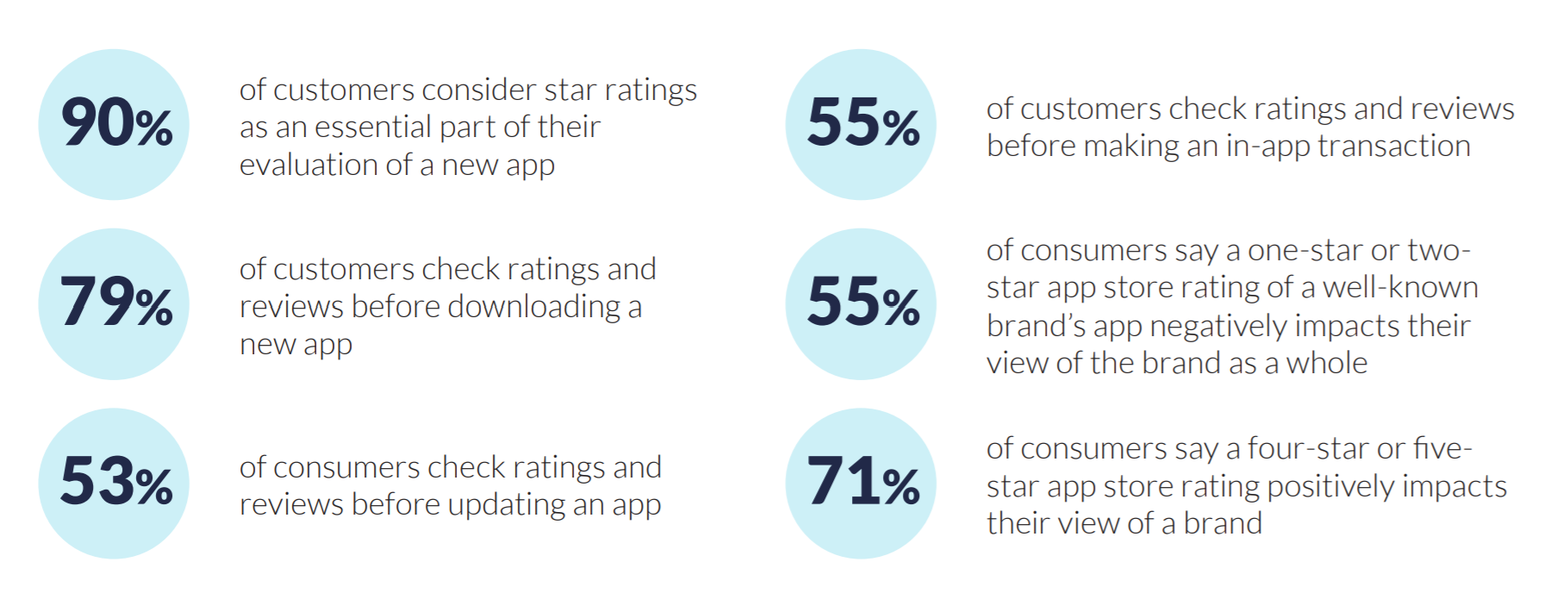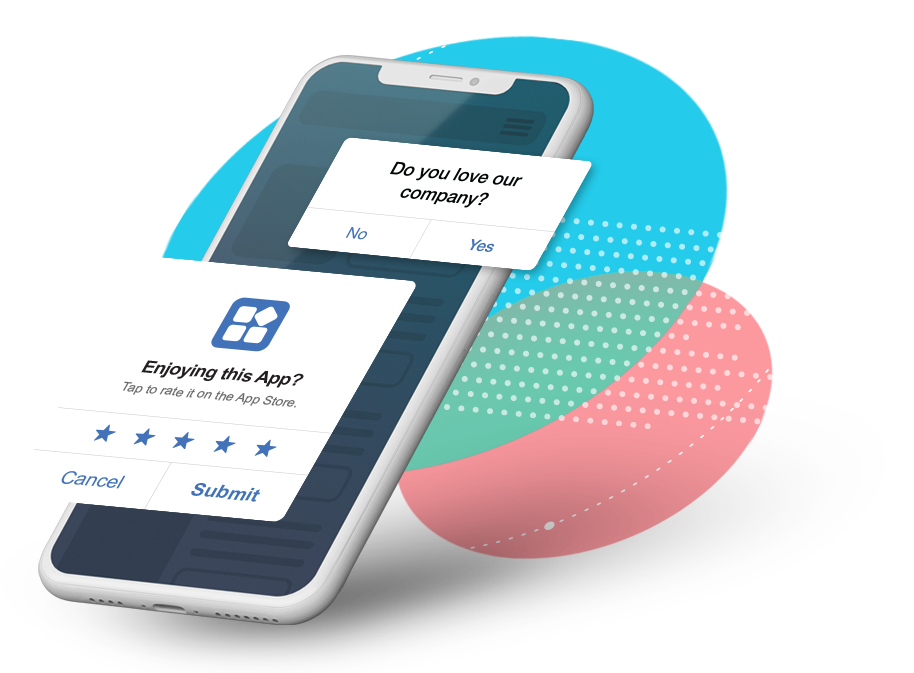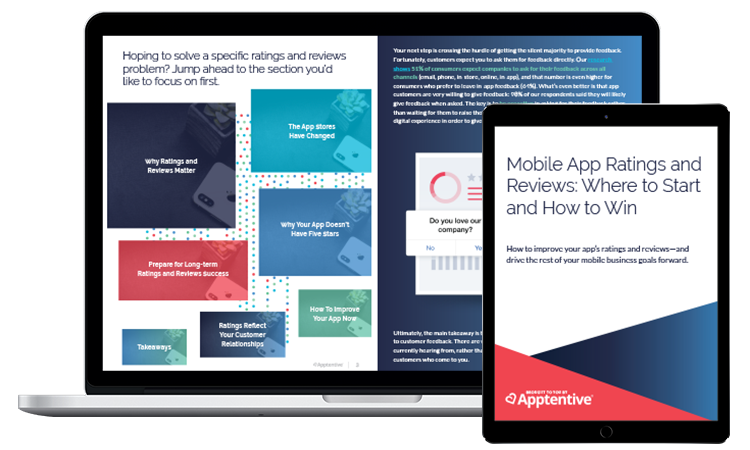Over the past few years, many people in the development community have sounded off about “rating nags” and the “please rate me” dialogs that some apps show, with perhaps the most pointed critique coming from John Gruber, of Daring Fireball. He shared his frustration with the usage of ratings prompts and said:
“I’ve long considered a public campaign against this particular practice, wherein I’d encourage Daring Fireball readers, whenever they encounter these “Please rate this app” prompts, to go ahead and take the time to do it — but to rate the app with just one star and to leave a review along the lines of, “One star for annoying me with a prompt to review the app.”
This is about much more than ratings. It’s about more than improving an app’s rankings.
This is about how companies communicate with their customers in the mobile world.
For many companies, mobile is the primary medium of communication with their customers and the number of companies who are mobile-first will only grow. Nearly all of us carry a mobile device that buzzes and blinks all day long, alerting us to news, updates, and information.
These messages build up – messages from our friends, our family and yes, the companies we’ve allowed into our inboxes, given our phone numbers, and whose apps we’ve installed.
We do not have to guess how this plays out – we already know. There are reasons why developers employ ratings prompts, why websites have numerous pop-ups, and we can only expect to see more of these on mobile.
These messages increase revenue, retention, ratings, and customer interaction. Overuse of these tactics is common, and while inappropriate interruptions can make a difference to a companies’ metrics, we know that appropriate, non-intrusive, implementation can make a larger one.
You don’t boycott a store because a clerk asked if they could help you or become annoyed when a cashier asks if you were able to find everything all right.
What is needed is a better answer to the question: “How can I communicate with my app customers without driving them crazy?” The answer has to come from the app developers and publishers, not the app customers. Nor can we rely on the app stores to make meaningful changes.
Why rating prompts Are necessary
Ninety percent of consumers consider star ratings to be an essential part of their evaluation of a new app. Seventy-nine percent of consumers check ratings and reviews before downloading an app, fifty-three percent check ratings and reviews before updating an app, and 55 percent check ratings and reviews before making an in-app transaction.
These pieces carry so much influence that it’s now more important than ever for app publishers to make them a priority.

The controversial ratings prompt
Apps rely on them, customers are annoyed by them. If used correctly they can increase your app’s rating and if abused can lose you customers.
Rating prompts are a double-edged sword that can disrupt the customer experience, but are one of the best ways to get more ratings. Like every tool, there are ways for rating prompts to be used incorrectly, but when used correctly it is a win-win for everyone involved.

Let’s Start Talking With Our Customers, Together
This is really about companies wanting to talk to their customers in an elegant, helpful, and relevant way without being annoying. So, what is the right way to communicate with customers inside a mobile app?
By working with thousands of companies on these problems we’ve discovered that there are a few clear guidelines that can form the basis of better behavior by apps:

- Don’t interrupt customers in the middle of tasks (app launch, cart checkout, etc.)
- Identify and enable communication at key moments in the customer’s journey – when they’re happy, frustrated, or lost. Identifying these moments should be a natural part of any app’s design process
- Instrument your communications activity so that you know what the impacts and outcomes of your messaging strategy are – working with hard coded solutions that don’t make you any smarter about your customers’ preferences is a recipe for disaster
- Iterate, experiment, and be able to make changes on the fly
Best Practices for In-App Rating Prompts
The debate about ratings is heavily influenced based upon personal anecdotes. Significant assumptions about consumer behavior at scale made its way into commonly held beliefs. What has been sorely lacking, however, has been actual concrete data.
“If you don’t know what happens when you send a message, you might as well not send the message at all.”
Here at Alchemer Mobile (formerly Apptentive), we think a lot about customer communication and the experience for the end consumer. For years we’ve instrumented every message and communication we power for our customers, measuring what the outcomes are.
This perspective has served our customers and our team well. It helps us to deliver best practices, improve tools, and shed light on an area that is severely lacking in data. For example, we know that:
- Just asking people to rate the app is ~5 to 10x less effective than starting a conversation about whether or not the consumer is happy
- The actual words used in the message to the customer can dramatically change the % of ecstatic customers who talk about your app in the app store and impact the % of ratings that also result in reviews
- Showing a ratings prompt on launch is 50 percent more likely to result in the app being closed than if it’s shown at any other point in the app
- Customers who are asked about their opinion with an app who are unhappy are >400% more likely to return to the app than the average app customer. It turns out that being informed that the company actually cares about your opinion can change the dynamic
- When you give people choices about what action to take, only about 20 to 30% of customers will actually exit the app to do something else.
This topic isn’t just something we believe in and write about, however. We’re building the solution to these problems. Over the past decade, we have developed a sophisticated communications system focused on enabling you to listen and talk with your mobile customers.
Our company is betting on the fact that you, and app publishers everywhere, want to treat their customers well and with respect.
We believe that while in-app communications are inevitable, they don’t have to be annoying, unsophisticated, and a necessary evil.
We know that it’s possible to connect with your app customers at the right time and we know many of you truly deeply care about the mobile customer experience. Your passion for the customer experience is why the ratings debate prompted such strong opinions and discussion in the first place.
It’s Time We All Got Better At Talking With Our Customers
Poorly implemented ratings prompts raise awareness around how easily a mobile experience can be ruined. It’s time to re-examine all of our customer interactions and ask ourselves if we can do better. Are there better places in the app to ask for feedback? Are there places where customers might need help and appreciate a company reaching out?
Interested in learning more? Check out our guide titled “Mobile App Ratings and Reviews: Where to Start and How to Win”
If you want to see how Alchemer Mobile (formerly Apptentive) can help you with ratings and reviews, request an Alchemer Mobile (formerly Apptentive) product demo!


